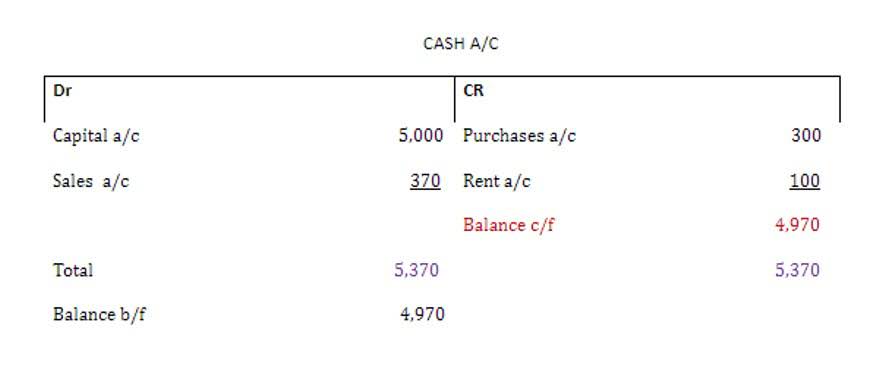
You’ll often turn to profit margin to determine the worth of your business. It’s an important metric that compares a company’s overall profit to its sales. However, if you want to know how much each product contributes to your bottom line after covering its variable costs, what you need is a contribution margin. The contribution margin ratio represents a company’s revenue minus variable costs, divided by its revenue. In short, it is the proportion of revenue left over after paying for variable costs.
Contribution Margin Analysis Per Unit Example

The concept of this equation relies on the difference between fixed and variable costs. Fixed costs are production costs that remain the same as production efforts increase. Variable costs, on the other hand, increase with production levels. This means that you can reduce your selling price to $12 and still cover your fixed and variable costs. Now, this situation can change when your level of production increases. As mentioned above, the per unit variable cost cm ratio decreases with the increase in the level of production.
- Learn financial statement modeling, DCF, M&A, LBO, Comps and Excel shortcuts.
- As production levels increase, so do variable costs and vise versa.
- On the other hand, variable costs are costs that depend on the amount of goods and services a business produces.
- It is considered a managerial ratio because companies rarely report margins to the public.
- The contribution margin is important because it gives you a clear, quick picture of how much “bang for your buck” you’re getting on each sale.
- Furthermore, an increase in the contribution margin increases the amount of profit as well.
- The more it produces in a given month, the more raw materials it requires.
Contribution Margin vs. Gross Margin: What is the Difference?

Accordingly, in the Dobson Books Company example, the contribution margin ratio was as normal balance follows. Profit margin is calculated using all expenses that directly go into producing the product. If the contribution margin for an ink pen is higher than that of a ball pen, the former will be given production preference owing to its higher profitability potential. The contribution margin shows how much additional revenue is generated by making each additional unit of a product after the company has reached the breakeven point.
Contribution Margin Ratio

Thus, the total manufacturing cost for producing 1000 packets of bread comes out to be as follows. Furthermore, it also gives you an understanding of the amount of profit you can generate after covering your fixed cost. Such an analysis would help you to undertake better decisions regarding where and how to sell your products. The fixed costs of $10 million are not included in the formula, however, it is important to make sure the CM dollars are greater than the fixed costs, otherwise, the company is not profitable. A company has revenues of $50 million, the cost of goods sold is $20 million, marketing is $5 million, product delivery fees are $5 million, and fixed costs are $10 million. The concept of contribution margin is applicable at various levels of manufacturing, business segments, and products.
- The Indirect Costs are the costs that cannot be directly linked to the production.
- The insights derived post-analysis can determine the optimal pricing per product based on the implied incremental impact that each potential adjustment could have on its growth profile and profitability.
- Management uses the contribution margin in several different forms to production and pricing decisions within the business.
- This is because it indicates the rate of profitability of your business.
- Accordingly, the net sales of Dobson Books Company during the previous year was $200,000.
The Financial Modeling Certification
- Similarly, we can then calculate the variable cost per unit by dividing the total variable costs by the number of products sold.
- Take your learning and productivity to the next level with our Premium Templates.
- As with other figures, it is important to consider contribution margins in relation to other metrics rather than in isolation.
- Next, the CM ratio can be calculated by dividing the amount from the prior step by the price per unit.
- Net sales refer to the total revenue your business generates as a result of selling its goods or services.
As such, companies should aim to have the highest contribution margin ratio possible, as this gives them a higher likelihood of covering its fixed costs with the money remaining to reach profitability. The contribution margin formula is calculated by subtracting total variable costs from net sales revenue. In the Dobson Books Company example, the total variable costs of selling $200,000 worth of books were $80,000. Remember, the per-unit variable cost of producing a single unit of your product in a particular production schedule remains constant. As mentioned above, contribution margin refers to the difference between sales revenue and variable costs of producing goods or services.

Fixed Cost vs. Variable Cost
- That is, fixed costs remain unaffected even if there is no production during a particular period.
- It is often used for building a break-even analysis, which helps companies determine at what point a new business project will reach enough sales to cover the costs.
- Suppose Company A has the following income statement with revenue of 100,000, variable costs of 35,000, and fixed costs of 20,000.
- In conclusion, we’ll calculate the product’s contribution margin ratio (%) by dividing its contribution margin per unit by its selling price per unit, which returns a ratio of 0.60, or 60%.
- Before making any changes to your pricing or production processes, weigh the potential costs and benefits.
- Only two more steps remain in our quick exercise, starting with the calculation of the contribution margin per unit – the difference between the selling price per unit and variable cost per unit – which equals $30.00.
The Contribution Margin is the incremental profit earned on each unit of product sold, calculated by subtracting direct variable costs from revenue. This means that the production of grapple grommets produce enough revenue to cover the fixed costs and still leave Casey with a profit of $45,000 at the end of the Insurance Accounting year. You need to calculate the contribution margin to understand whether your business can cover its fixed cost. Also, it is important to calculate the contribution margin to know the price at which you need to sell your goods and services to earn profits.